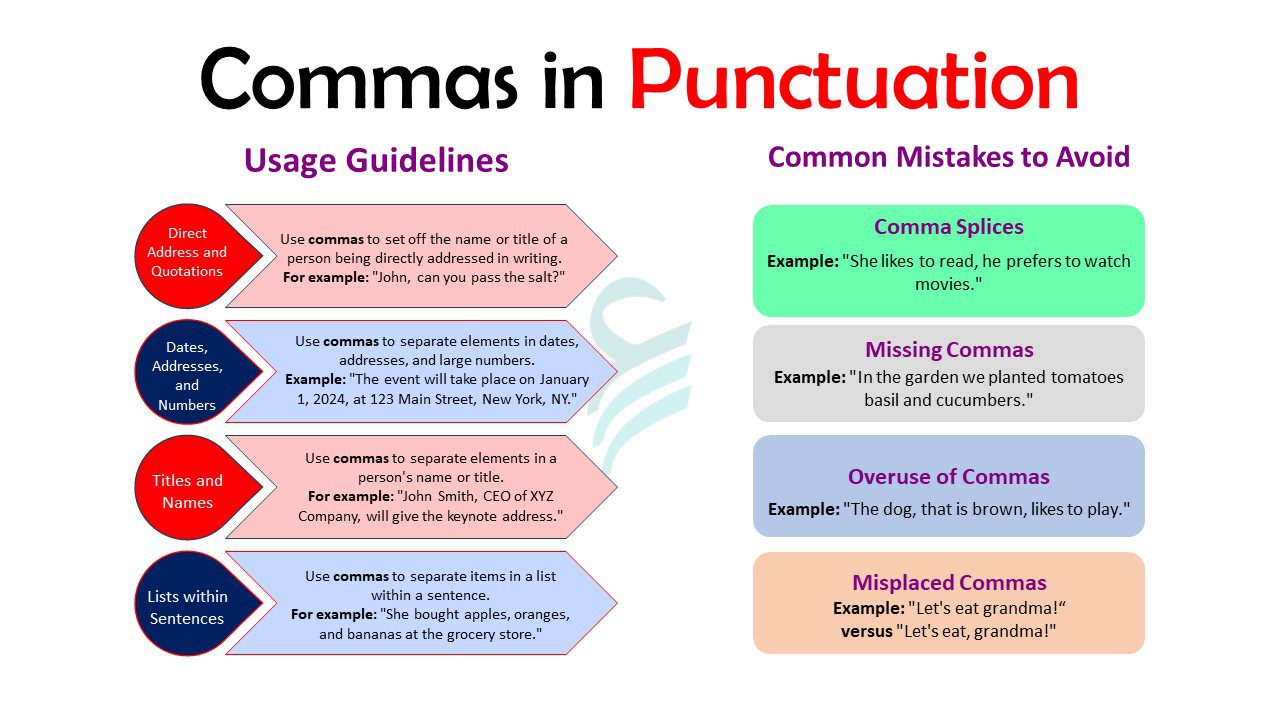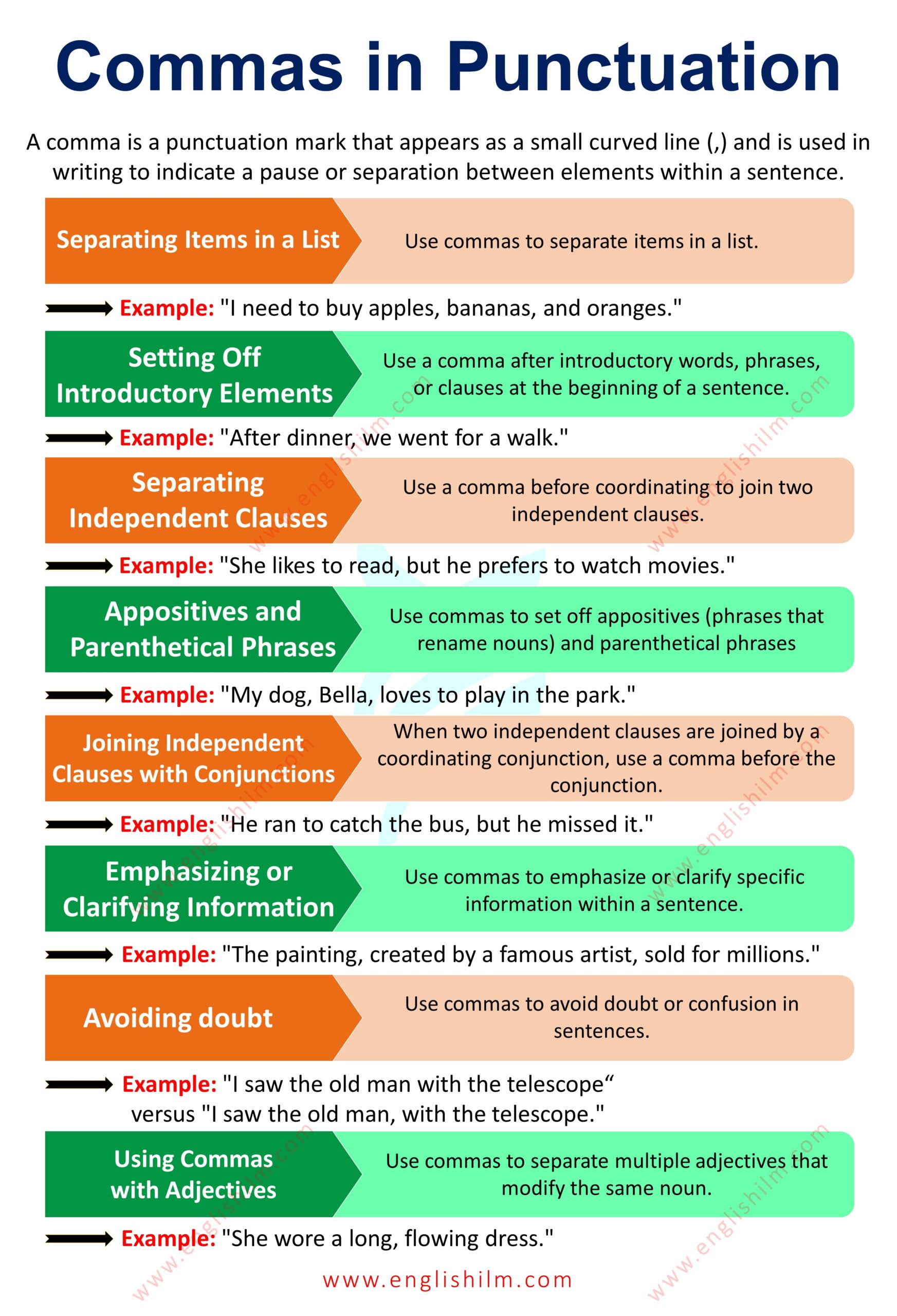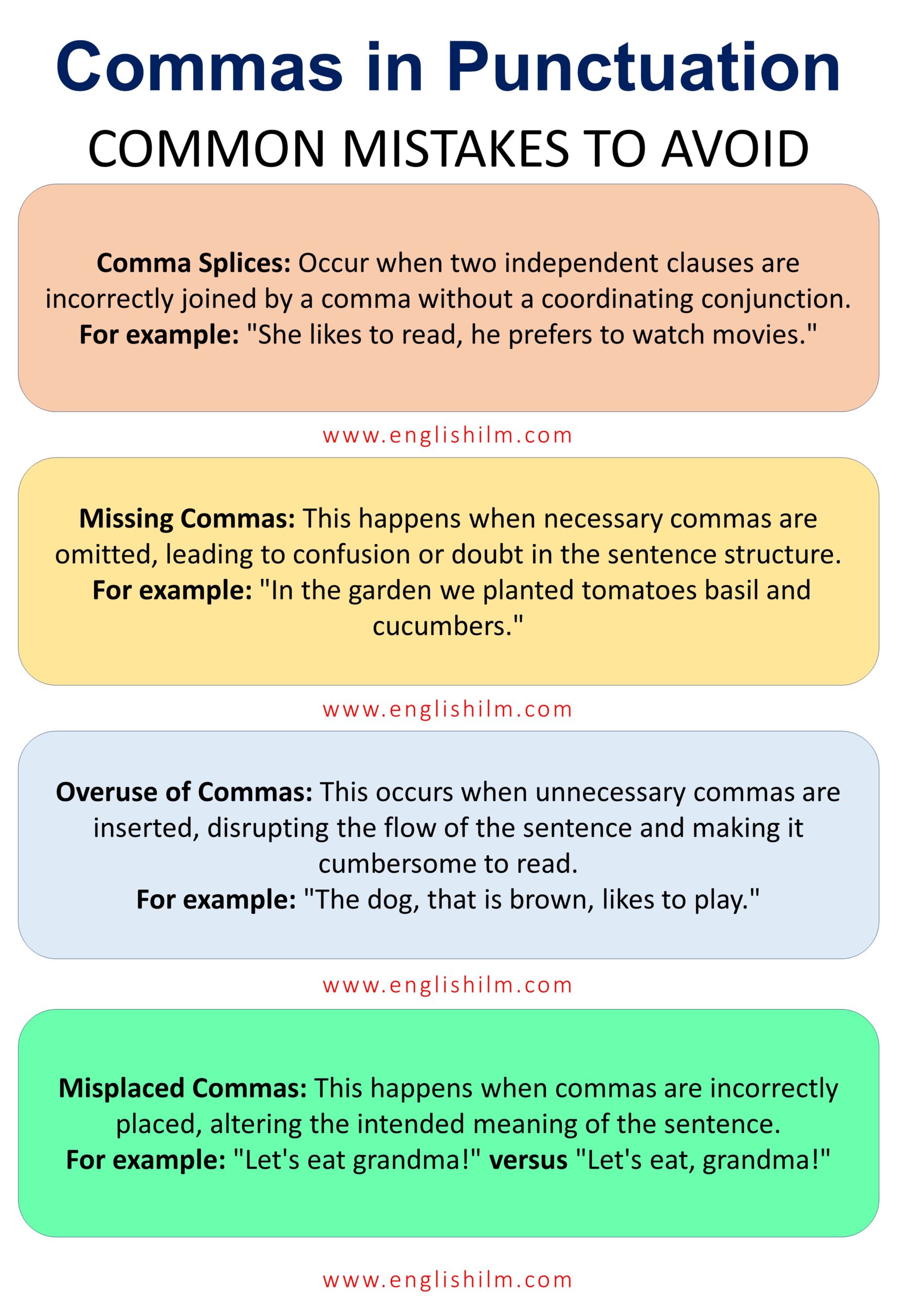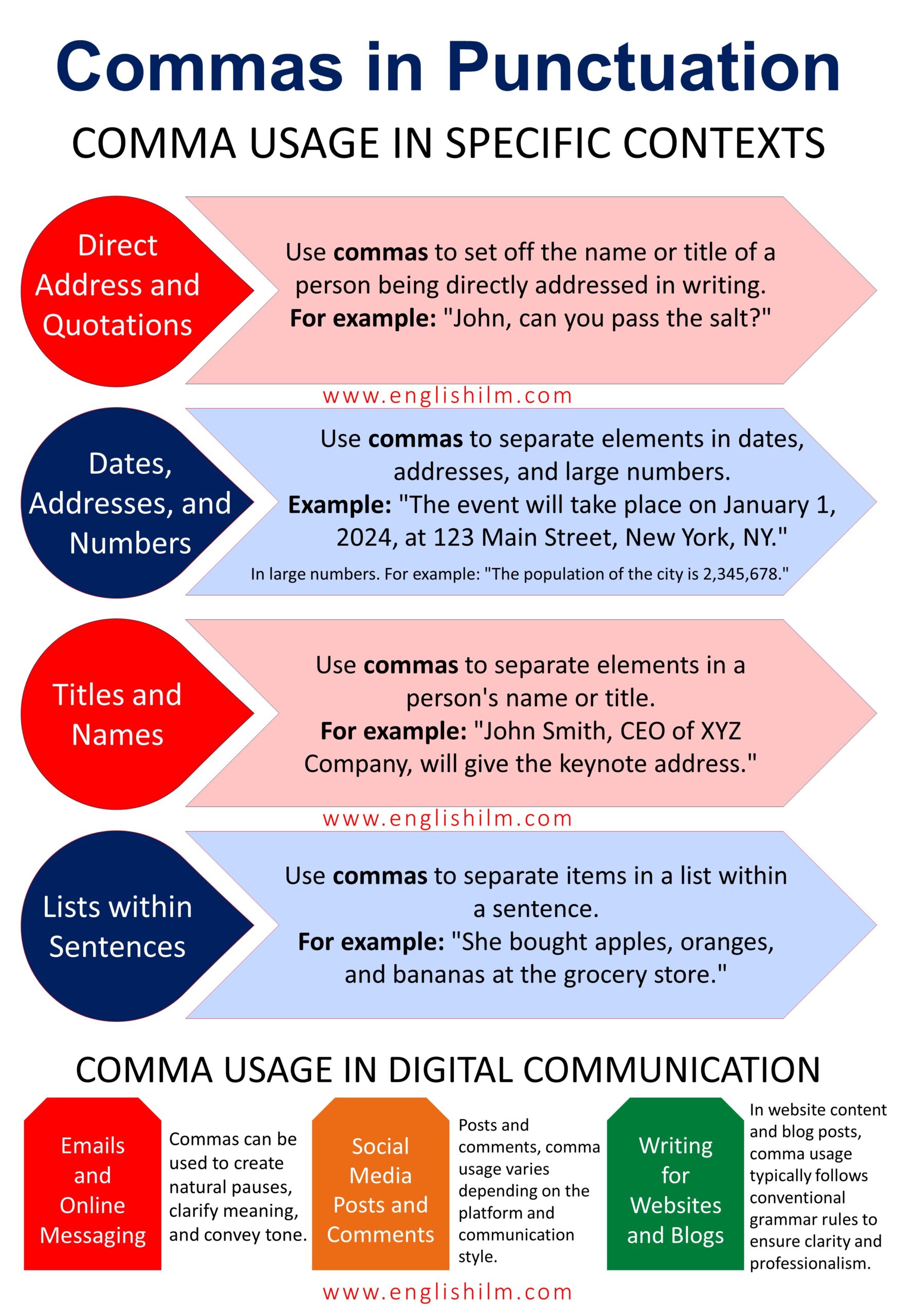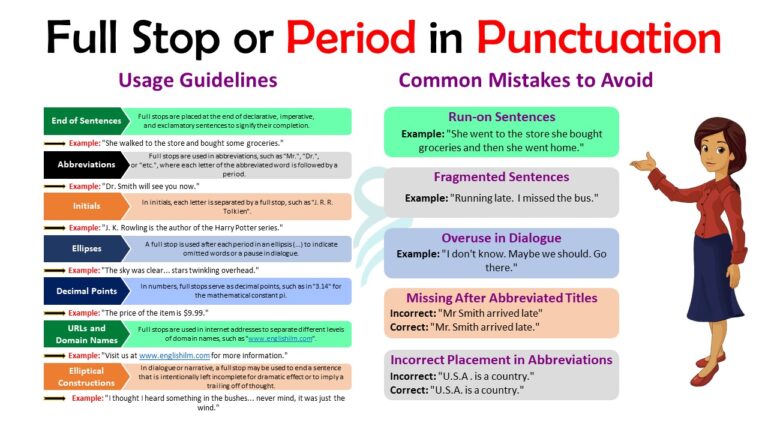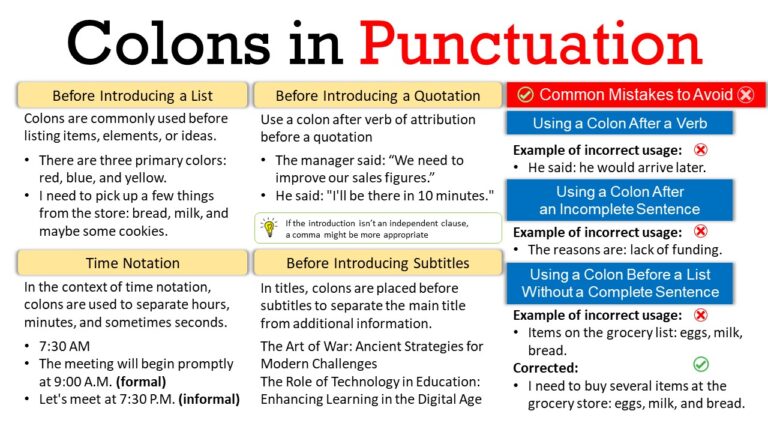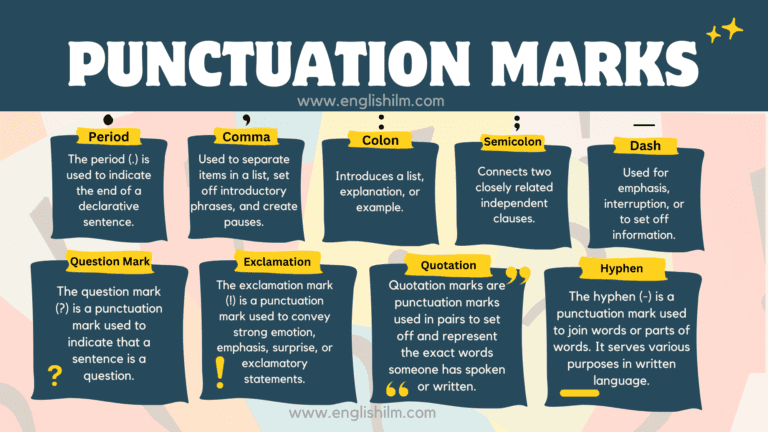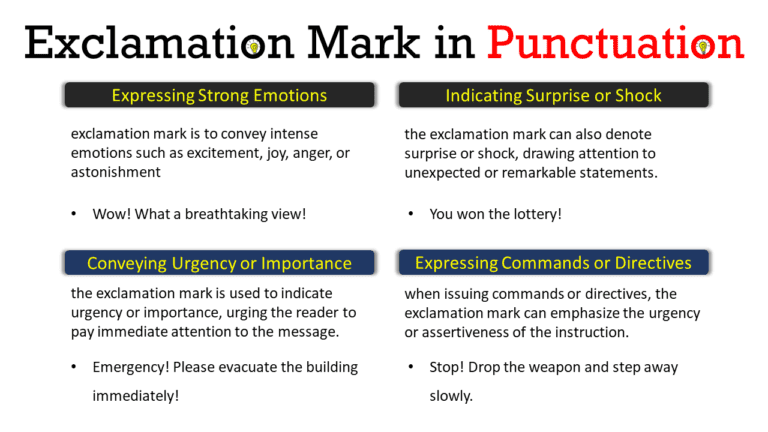In this blog post, you will learn about the comma, a small but essential punctuation mark that helps structure sentences clearly. Commas play a crucial role in making writing easy to read and understand. We’ll explore their many uses and benefits, helping you master their placement for more polished writing.
Now let’s get started and learn everything there is to know about commas!
What is a Comma?
A comma is a small piece of punctuation that forms a tiny curve (,). Its function is to produce little fragments of sentences. These pauses aid in the comprehension of the text by the reader.
Commas indicate when to pause or divide distinct portions of a sentence, just as signposts do in writing. They aid in improving the readability and clarity of texts.
Basic Rules of Comma Usage
1. Separating Items in a List:
Use commas to separate items in a list.
For example:
- I need to buy apples, bananas, and oranges.
- For breakfast, she had pancakes, scrambled eggs, bacon, and orange juice.
- The camping trip required a tent, sleeping bag, flashlight, and first aid kit.
- His favorite hobbies include hiking, painting, reading, and gardening.
- The grocery list included apples, bananas, spinach, and almonds.
2. Setting Off Introductory Elements:
Use a comma after introductory words, phrases, or clauses at the beginning of a sentence.
For example:
- After dinner, we went for a walk.
- After a long day at work, she decided to unwind with a hot bath.
- In the early morning hours, the city streets were still quiet.
- Despite the rain, they continued their hike along the muddy trail.
- Before we begin the meeting, let’s review the agenda.
- With a sigh of relief, he finally finished the last chapter of his book.
3. Separating Independent Clauses:
Use a comma before coordinating conjunctions (and, but, or, nor, for, so, yet) to join two independent clauses.
For example:
- She likes to read, but he prefers to watch movies.
- She wanted to go to the beach, but it was raining heavily.
- He studied hard for the exam, yet he still didn’t perform well.
- The concert was sold out, so they decided to watch a movie instead.
- I love to travel, but I also enjoy staying home and reading.
4. Appositives and Parenthetical Phrases:
Use commas to set off appositives (phrases that rename nouns) and parenthetical phrases (extra information that can be removed without changing the meaning of the sentence).
For example:
- My dog, Bella, loves to play in the park.
- John, my best friend, is coming to visit next weekend.
- The movie, directed by Steven Spielberg, was a box office hit.
- Mount Everest, the highest peak in the world, is located in the Himalayas.
- My grandfather, a World War II veteran, told us stories from his time in the military.
5. Joining Independent Clauses with Conjunctions:
When two independent clauses are joined by a coordinating conjunction, use a comma before the conjunction.
For example:
- He ran to catch the bus, but he missed it.
- She loves to dance, swim, and paint.
- After work, she went straight home.
- The cat, a sleek Siamese, prowled the room.
- He smiled warmly, then left the room.
- It rained heavily, so they canceled the picnic.
These basic rules help to clarify meaning and improve readability in writing.
Advanced Usage of a Comma
1. Emphasizing or Clarifying Information:
Use commas to emphasize or clarify specific information within a sentence.
For example:
- The painting, created by a famous artist, sold for millions.
- The cat, black and white, sat on the windowsill.
- His dog, a golden retriever, loves to play fetch.
- The restaurant, famous for its seafood, is always busy.
- The city, bustling and vibrant, never sleeps.
- His smile, warm and genuine, lit up the room.
2. Avoiding doubt:
Use commas to avoid doubt or confusion in sentences.
For example:
- I saw the old man with the telescope” versus “I saw the old man, with the telescope.
- We’re going to eat, Grandma.
- Let’s eat, kids.
- Slow down, pedestrians.
- Let’s go, Jane.
- Come here, Rover.
3. Clarifying Complex Sentences:
Use commas to clarify complex sentence structures, especially when dealing with subordinate clauses or phrases.
For example:
- Although it was raining, we decided to go for a walk.
- She cooked dinner, while he set the table.
- He studied all night, so he aced the exam.
- They laughed, realizing their mistake.
- The rain stopped, allowing us to continue our hike.
- The sun set, casting a golden glow over the horizon.
4. Setting Off Nonessential Clauses and Phrases:
Use commas to set off nonessential clauses or phrases that provide additional information but can be removed without changing the meaning of the sentence.
For example:
- My friend, who lives in Paris, is visiting next week.
- The dog, a Labrador retriever, chased the ball.
- My friend, who lives in New York, is visiting next week.
- The book, which I borrowed from the library, was fascinating.
- The cake, made with fresh strawberries, was delicious.
- John, my neighbor’s son, won the race.
5. Using Commas with Adjectives:
Use commas to separate multiple adjectives that modify the same noun.
For example:
- She wore a long, flowing dress.
- She wore a soft, comfortable sweater.
- The old, dilapidated house was scheduled for demolition.
- He found a beautiful, serene spot by the lake.
- It was a long, exhausting journey.
- The bright, sunny day lifted everyone’s spirits.
Mastering advanced comma usage can add depth and precision to your writing, enhancing clarity and readability for your audience.
Common Comma Mistakes
1. Comma Splices:
This occurs when two independent clauses are incorrectly joined by a comma without a coordinating conjunction.
For example:
- She likes to read; he prefers to watch movies.
2. Missing Commas:
This happens when necessary commas are omitted, leading to confusion or doubt in the sentence structure.
For example:
- In the garden we planted tomatoes basil and cucumbers.
3. Overuse of Commas:
This occurs when unnecessary commas are inserted, disrupting the flow of the sentence and making it cumbersome to read.
For example:
- The dog, that is brown, likes to play.
4. Misplaced Commas:
This happens when commas are incorrectly placed, altering the intended meaning of the sentence.
For example:
- Let’s eat grandma! versus Let’s eat, grandma!
By avoiding these common comma mistakes, you can ensure your writing is clear, concise, and effectively communicates your message to your audience.
Comma Usage in Specific Contexts
1. Direct Address and Quotations:
Use commas to set off the name or title of a person being directly addressed in writing.
For example:
- John, can you pass the salt?
Additionally, use commas to introduce and separate a quotation from the rest of the sentence.
For example:
- She said, “I’ll be there at 5 o’clock.
2. Dates, Addresses, and Numbers:
Use commas to separate elements in dates, addresses, and large numbers.
For example:
- The event will take place on January 1, 2024, at 123 Main Street, New York, NY.
Additionally, use commas to separate thousands, millions, etc., in large numbers.
For example:
- The population of the city is 2,345,678.
3. Titles and Names:
Use commas to separate elements in a person’s name or title.
For example:
- John Smith, CEO of XYZ Company, will give the keynote address.
Additionally, use commas to separate a person’s last name from their first name when mentioned together.
For example:
- Smith, John, is the author of the book.
4. Lists within Sentences:
Use commas to separate items in a list within a sentence.
For example:
- She bought apples, oranges, and bananas at the grocery store.
Read More
FAQs about Comma
1. What is the main use of a comma in punctuation?
A comma is used to separate parts of a sentence to make it easier to read. It helps separate ideas, clauses, or items in a list.
2. When should I use a comma in a list?
Use a comma to separate items in a list of three or more. For example: “I bought apples, bananas, and oranges.”
3. How do I use a comma with conjunctions?
Use a comma before conjunctions like “and,” “but,” or “so” when they join two independent clauses. For example: “I was tired, but I finished my homework.”
4. Should I use a comma after introductory words or phrases?
Yes, use a comma after introductory words, phrases, or clauses to separate them from the main part of the sentence. For example: “After dinner, we went for a walk.”
5. When should I not use a comma?
Do not use a comma between two complete sentences without a conjunction. For example, instead of “I went to the store, I bought some milk,” write, “I went to the store, and I bought some milk.”
6. Can you give an example of a comma used for extra information?
Yes, use commas to set off extra information or non-essential clauses. For example: “My brother, who lives in New York, is visiting us next week.”

